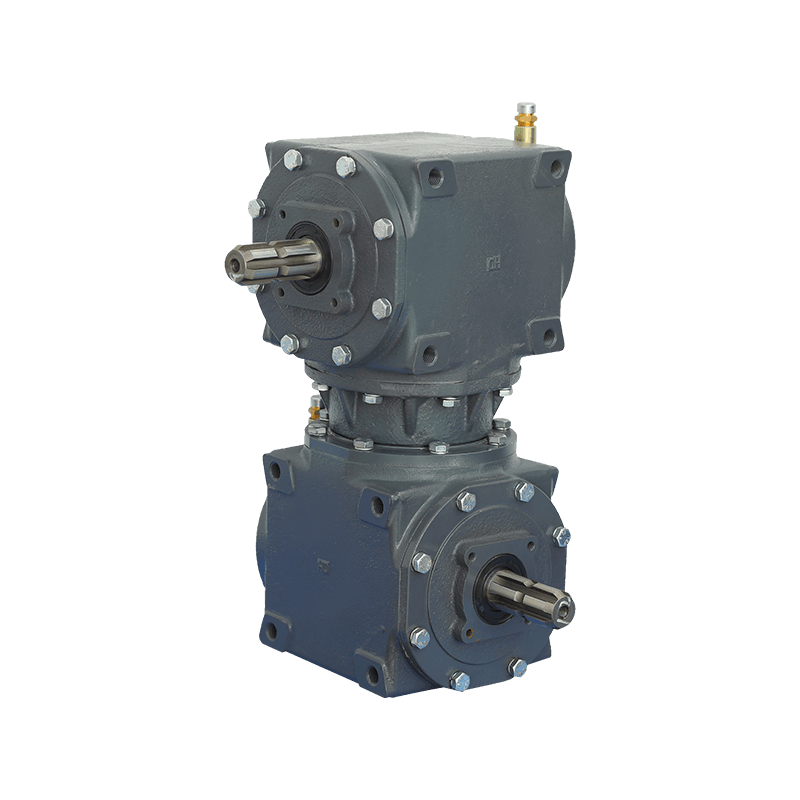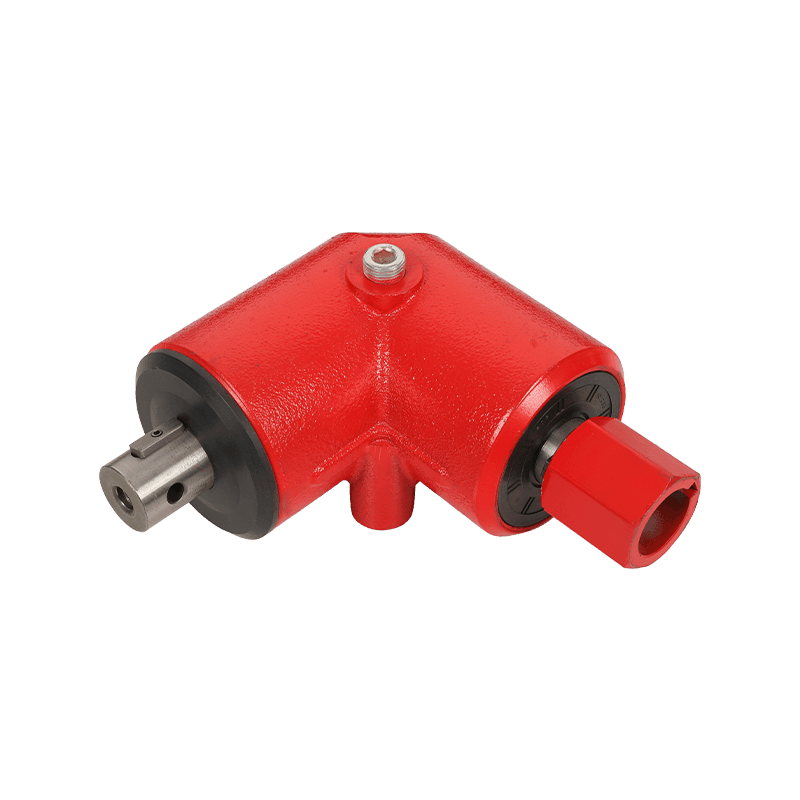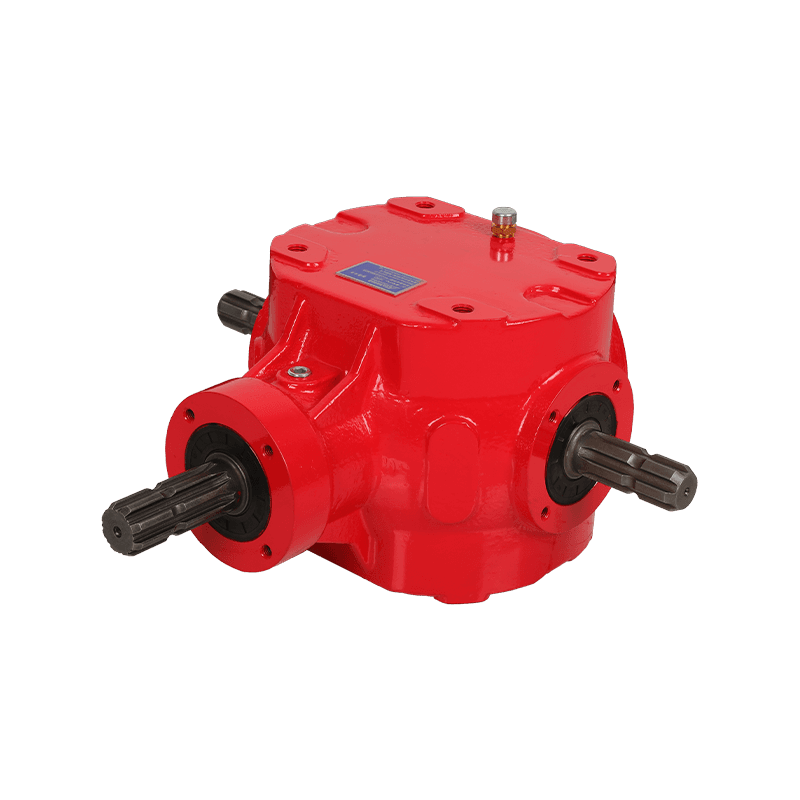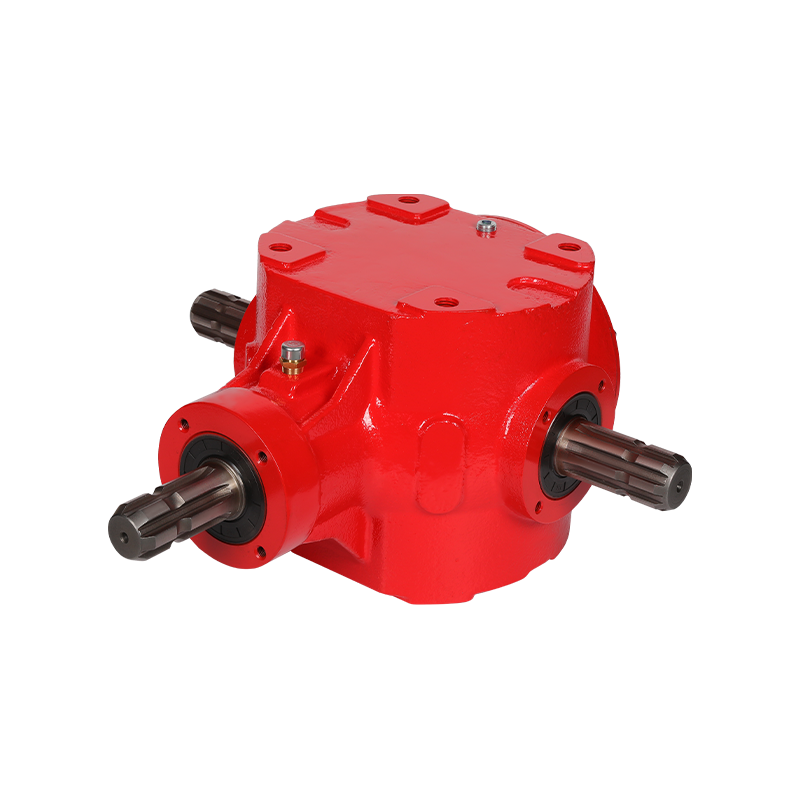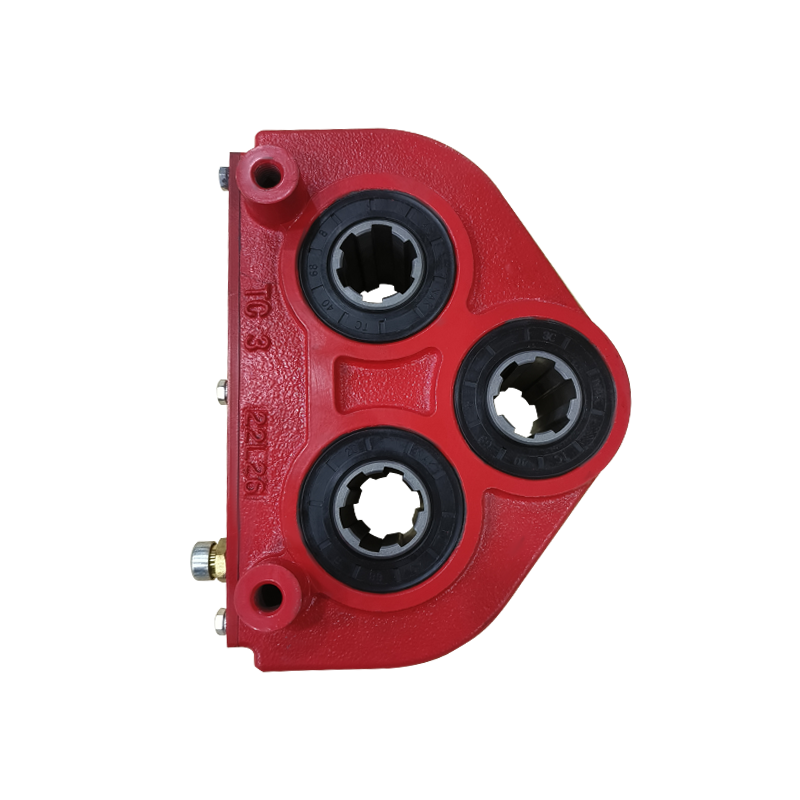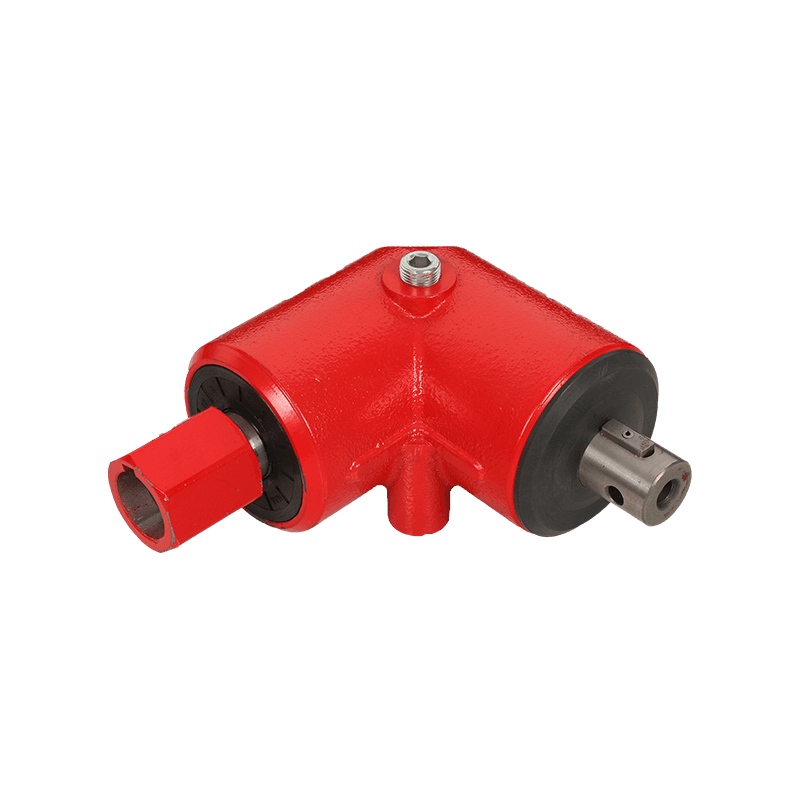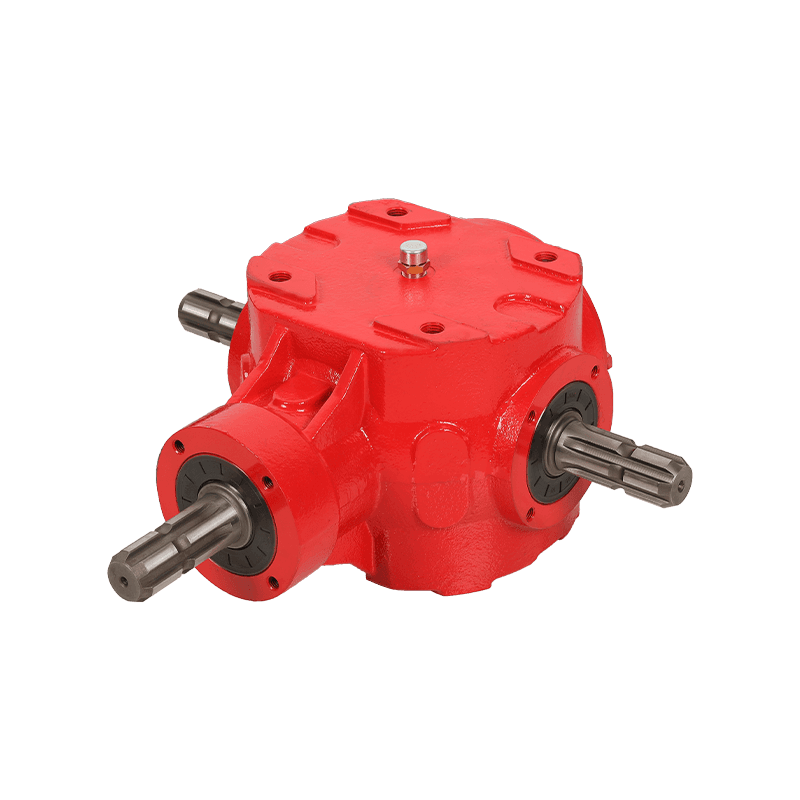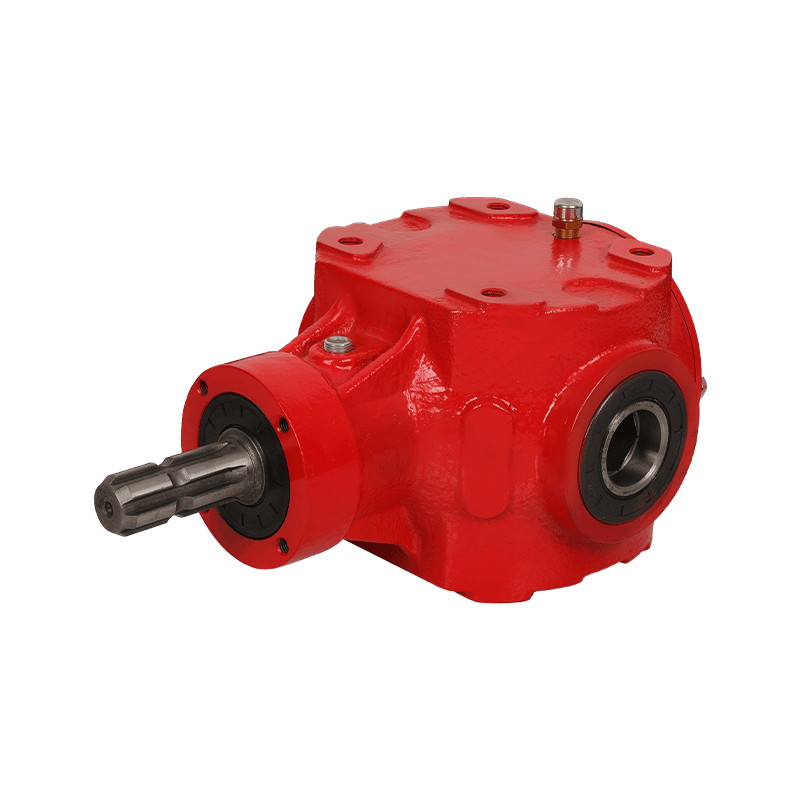A lawn mower gearbox is a crucial component within a lawn mower's mechanical system. Its primary function is to transfer power from the engine to either the wheels or the cutting blades, ensuring the mower operates effectively. Without a properly functioning gearbox, a lawn mower would not be able to cut grass efficiently or move smoothly across different terrains.
How a Lawn Mower Gearbox Works
Power Input
The power for the gearbox typically comes from the lawn mower's engine, which can be either a gasoline - powered internal combustion engine or an electric motor. This power is transferred to the gearbox through a power take - off (PTO) drive shaft or a belt - drive system. For example, in many walk - behind lawn mowers, a belt connects the engine's pulley to a pulley on the gearbox, transmitting rotational energy.
Gear Reduction and Torque Increase
Once the power reaches the gearbox, it undergoes a gear reduction process. Inside the gearbox, there are multiple gears of different sizes. Smaller gears with fewer teeth are driven by the engine's input shaft. These smaller gears mesh with larger gears that have more teeth. As the smaller gear rotates, it causes the larger gear to rotate at a slower speed. Mathematically, if gear A has 20 teeth and gear B has 60 teeth, for every 3 rotations of gear A, gear B will make 1 rotation. This reduction in speed results in an increase in torque. Torque is the rotational force that allows the mower to overcome resistance, such as thick grass or uneven ground. A higher torque output enables the mower blades to cut through grass more effectively or helps the mower move forward with greater force.
Blade or Wheel Engagement
For Blade - Driven Gearboxes: The output shaft of the gearbox is connected to the mower blade assembly. When the gearbox is engaged, either manually through a lever or through a mechanical or electric clutch system, the rotational motion from the gearbox is transferred to the mower blades. This causes the blades to rotate rapidly, slicing through the grass.
For Wheel - Driven Gearboxes: In self - propelled lawn mowers, the gearbox distributes power to the wheels. The gearbox may have different gears that can be selected to change the speed and torque applied to the wheels. This allows the mower to move forward or backward at different rates, adapting to various lawn conditions.
Types of Lawn Mower Gearboxes
Manual Gearboxes
Operation: Manual gearboxes in lawn mowers require the operator to physically shift gears. This is usually done using a gear - shift lever. The operator needs to judge the appropriate gear based on the grass condition, terrain, and the mower's speed requirements. For example, in thick grass, a lower gear is selected to provide more torque, while on flat, well - maintained lawns, a higher gear can be used for faster mowing.
Advantages: They are relatively simple in design, which often makes them more cost - effective to manufacture and repair. Manual gearboxes also give the operator more control over the mower's performance.
Disadvantages: They require more operator skill and attention compared to other types. Shifting gears at the wrong time can cause the engine to stall or the mower to operate inefficiently.
Automatic Gearboxes
Operation: Automatic gearboxes in lawn mowers use sensors and hydraulic or electronic systems to shift gears automatically. These sensors detect factors such as the engine's speed, the load on the mower (e.g., when cutting thick grass), and the mower's speed. Based on this information, the gearbox automatically selects the appropriate gear ratio to optimize performance.
Advantages: They offer greater convenience for the operator, as there is no need to manually shift gears. This can be especially beneficial for long - term or large - area mowing tasks, reducing operator fatigue. Automatic gearboxes also tend to provide smoother gear transitions, resulting in a more consistent mowing experience.
Disadvantages: They are more complex in design, which can make them more expensive to manufacture, purchase, and repair. The additional sensors and electronic components are also more prone to failure compared to the simpler components of a manual gearbox.
Continuously Variable Transmissions (CVT)
Operation: CVTs use a system of pulleys and belts or chains to provide an infinite number of gear ratios within a certain range. One pulley is connected to the engine (input), and the other is connected to the output shaft (either for the blades or wheels). By changing the effective diameter of the pulleys, the gear ratio can be adjusted continuously. For example, as the engine speed increases, the pulleys can adjust to change the ratio, allowing for a smooth and seamless change in the mower's speed or blade rotation speed.
Advantages: CVTs offer extremely smooth operation, as there are no distinct gear shifts. They can optimize the mower's performance by always operating at the most efficient gear ratio for the given load. This can result in better fuel efficiency (for gasoline - powered mowers) or longer battery life (for electric mowers).
Disadvantages: They can be more expensive to purchase and maintain compared to manual gearboxes. The belts or chains in a CVT can wear out over time and may need to be replaced, and the pulley systems require precise alignment and maintenance.
Maintenance of Lawn Mower Gearboxes
Lubrication
Importance: Proper lubrication is essential for the smooth operation and longevity of a lawn mower gearbox. Lubricants reduce friction between the moving parts (such as gears and bearings) within the gearbox. Reducing friction helps to prevent excessive wear and tear, overheating, and noise. It also improves the efficiency of power transfer, as less energy is wasted in overcoming friction.
Type of Lubricants: The type of lubricant recommended for a lawn mower gearbox depends on the manufacturer's specifications. In general, most gearboxes use gear oil. For some high - performance or specialized gearboxes, synthetic lubricants may be recommended. These synthetic lubricants often offer better protection at extreme temperatures and under heavy loads.
Lubrication Intervals: The frequency of lubrication varies depending on the mower's usage. For frequently used lawn mowers, it may be necessary to check and top - up the lubricant every few months or after a certain number of operating hours (e.g., every 25 - 50 hours of use). Less frequently used mowers may only need lubrication once a year or before the start of each mowing season.
Inspection for Wear and Damage
Visual Inspection: Regularly inspect the gearbox for any signs of physical damage, such as cracks in the housing, leaks of lubricant, or loose bolts. Cracks in the housing can compromise the integrity of the gearbox and lead to further damage. Lubricant leaks can indicate a problem with seals or gaskets, and if left unaddressed, can cause the gearbox to run dry and overheat.
Listening for Noises: Unusual noises coming from the gearbox, such as grinding, clicking, or whining, can be a sign of worn - out gears, misaligned components, or a lack of lubrication. Grinding noises may suggest that the teeth on the gears are damaged or that there is debris inside the gearbox. Clicking noises could indicate a problem with bearings or a loose part. If such noises are detected, it is important to stop using the mower and inspect the gearbox further.
Checking for Vibration: Excessive vibration during operation can also be a sign of gearbox problems. Vibration can be caused by unbalanced gears, worn - out bearings, or misalignment. A vibrating gearbox not only affects the performance of the mower but can also lead to premature failure of other components connected to the gearbox.
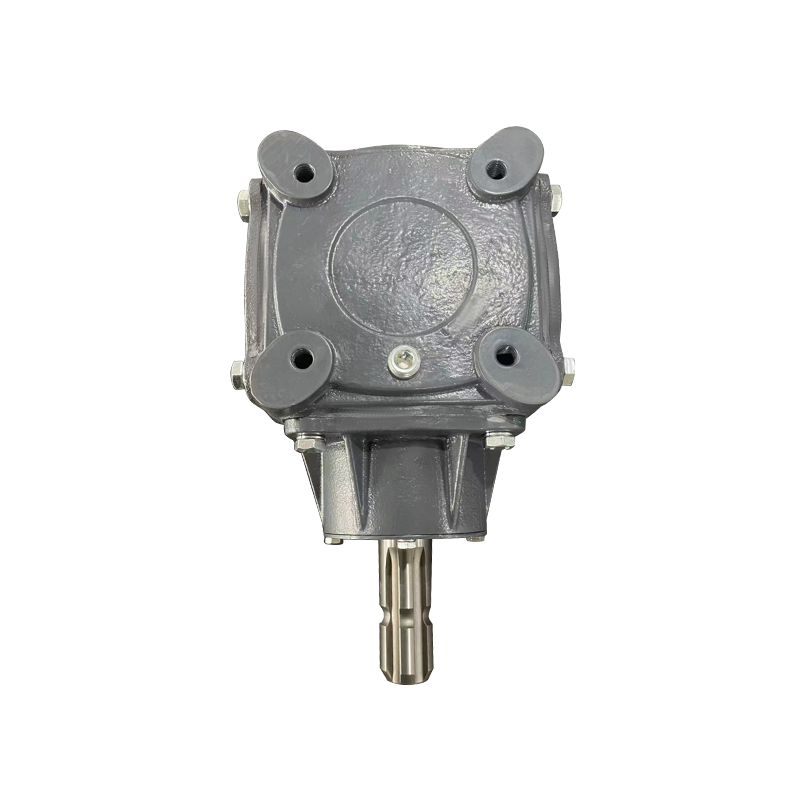
Common Problems with Lawn Mower Gearboxes
Gear Wear
Causes: Gear wear can occur due to several factors. One of the main causes is lack of proper lubrication. Without sufficient lubricant, the metal - to - metal contact between gears can cause the teeth to wear down over time. Overloading the mower, such as trying to cut thick, wet grass with the mower set to a high - speed gear, can also put excessive stress on the gears and accelerate wear. Additionally, debris or dirt getting into the gearbox can act as an abrasive, causing the gears to wear unevenly.
Symptoms: The most obvious symptom of gear wear is a change in the mower's performance. The mower may start to lose power, or the blades may not rotate as smoothly as before. There may also be a decrease in the mower's ability to move forward or backward, especially on slopes or in thick grass. Unusual noises, such as grinding or clicking, are also common symptoms of gear wear.
Solutions: If gear wear is detected early, it may be possible to slow down the wear by ensuring proper lubrication and avoiding overloading the mower. However, if the gears are significantly worn, they will need to be replaced. In some cases, the entire gearbox may need to be replaced, depending on the extent of the damage and the availability of individual replacement gears.
Bearing Failure
Causes: Bearings in a lawn mower gearbox can fail due to a variety of reasons. Overheating is a common cause, which can be caused by lack of lubrication, excessive load, or a misaligned gearbox. Bearing failure can also occur due to normal wear and tear over time, especially in mowers that are used frequently. Additionally, if the mower is dropped or subjected to a significant impact, the bearings can be damaged.
Symptoms: Symptoms of bearing failure include excessive noise, such as a high - pitched whine or a rumbling sound, coming from the gearbox. The gearbox may also experience increased vibration, and the mower may become difficult to operate smoothly. In some cases, the mower may suddenly stop working if the bearing fails completely.
Solutions: If bearing failure is suspected, the gearbox will need to be disassembled to inspect the bearings. Worn - out or damaged bearings should be replaced with new ones. It is also important to identify and address the underlying cause of the bearing failure, such as ensuring proper lubrication or checking for misalignment, to prevent future bearing failures.
Clutch Issues (in gearboxes with clutches)
Causes: Clutch problems in lawn mower gearboxes can be caused by several factors. The clutch may become worn out over time due to repeated use, especially in mowers that require frequent engagement and disengagement of the blades or wheels. Contamination of the clutch with dirt, oil, or debris can also affect its performance. Additionally, if the clutch is not adjusted properly, it may not engage or disengage fully, leading to problems such as the blades not stopping completely when the clutch is disengaged or the mower not moving smoothly when the clutch is engaged.
Symptoms: Symptoms of clutch issues include the blades or wheels not engaging or disengaging properly. The mower may experience a delay in starting to move when the clutch is engaged, or the blades may continue to rotate slightly even when the clutch is supposed to be disengaged. There may also be a burning smell coming from the clutch area, which indicates that the clutch is slipping and overheating.
Solutions: Minor clutch problems, such as adjustment issues, can often be resolved by adjusting the clutch cable or mechanism according to the manufacturer's instructions. If the clutch is worn out or contaminated, it may need to be cleaned or replaced. In some cases, if the clutch is part of a larger assembly within the gearbox, the entire assembly may need to be replaced.
Choosing the Right Lawn Mower Gearbox
Consider the Type of Lawn Mower
Walk - Behind Mowers: For walk - behind mowers, a gearbox that is lightweight and easy to operate is often preferred. Manual gearboxes can be a good choice for smaller, less powerful walk - behind mowers, as they are simple and cost - effective. However, for larger walk - behind mowers or those used for commercial purposes, an automatic or CVT gearbox may offer more convenience and better performance.
Riding Mowers: Riding mowers typically require a more robust gearbox to handle the higher power output of the engine and the larger cutting decks. Automatic and CVT gearboxes are popular choices for riding mowers, as they provide smooth operation and easy speed control. The gearbox should also be able to withstand the higher loads and longer operating times associated with riding mowers.
Zero - Turn Mowers: Zero - turn mowers require a gearbox that can provide precise control over the speed and direction of the wheels. Specialized gearboxes designed for zero - turn mowers are available, which often feature differential systems to allow for smooth turning. These gearboxes need to be able to handle the high - speed, tight - turn maneuvers that zero - turn mowers are known for.
Power Requirements
Engine Power: The power output of the lawn mower's engine is an important factor in choosing a gearbox. A gearbox must be able to handle the maximum power and torque that the engine can produce. If the gearbox is under - rated for the engine's power, it may experience premature wear, overheating, or even failure. For example, a small, 5 - horsepower engine in a walk - behind mower will require a different gearbox than a large, 25 - horsepower engine in a riding mower.
Cutting and Moving Requirements: Consider the type of grass you will be cutting and the terrain of your lawn. If you have thick, tall grass or a hilly lawn, you will need a gearbox that can provide sufficient torque to drive the blades or move the mower forward. A gearbox with a lower gear ratio may be more suitable in such cases, as it will provide more torque at the expense of speed.
Budget
Initial Cost: Gearboxes can vary widely in price depending on their type, quality, and brand. Manual gearboxes are generally the most affordable, while CVT gearboxes are often the most expensive. When considering the initial cost, it is important to balance your budget with the performance and features you need. For example, if you are on a tight budget and have a small, simple lawn, a manual gearbox may be sufficient. However, if you have a large, complex lawn and want the convenience of an automatic or CVT gearbox, you may need to invest more money.
Long - Term Cost: In addition to the initial purchase price, consider the long - term cost of maintenance and repairs. More complex gearboxes, such as automatic and CVT gearboxes, may require more frequent maintenance and can be more expensive to repair if they break down. Manual gearboxes, on the other hand, are usually simpler to repair and maintain, which can result in lower long - term costs.
Conclusion
The lawn mower gearbox is a vital component that significantly impacts the performance, efficiency, and durability of a lawn mower. Understanding how it works, the different types available, how to maintain it, and how to choose the right one for your needs is essential for anyone who owns or uses a lawn mower. By taking proper care of the gearbox and selecting the appropriate type, you can ensure that your lawn mower operates smoothly and effectively for years to come, making the task of lawn mowing more efficient and less frustrating.



 English
English 中文简体
中文简体 عربى
عربى русский
русский Español
Español




